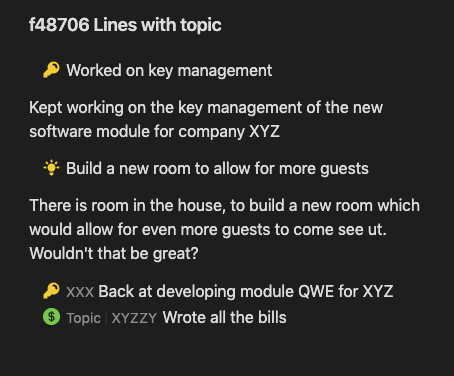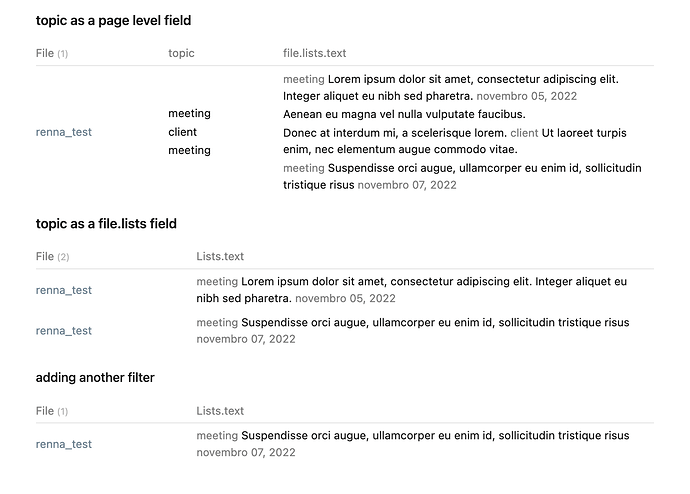What I’m trying to do
I have a daily note where I note down different topics I’m working on. All of those have an inline field with (Topic::XXX) written in the line. Throughout the day multiple different topics pop up and I write down all of those in on different lines (not tasks, not bullet lists), but all of them have the (Topic::XXX) field, where XXX is the corresponding topic.
I want to add some of them to their own page for a weekly meeting I have with my boss and note those topics/memos.
Things I have tried
So I tried to add a hashtag in front of the line, I also tried it with linking to another page. I also added some other inline fields (like the meeting-date, details about the topic, …)
Then I tried querying it all via:
```dataview
TABLE WITHOUT ID Datum, Thema, Detail, file.link AS Notiz
FROM #myhashtag
In the results I get the following:
So if there are multiple values for a Thema but I only want to see the one which actually has the filter-criteria in front of it. How do I get that?




